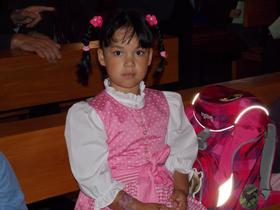Boarding School Life: A Day in the Life of a Student Introduction
For many families considering residential education, understanding what a typical day looks like at a boarding school is a key decision factor. In 2025, boarding school life continues to offer a structured environment where academics, co-curriculars, social development, and residential routines blend in daily rhythm. This article walks through a representative “day in the life” of a boarding student, highlights current trends, offers expert commentary, and provides practical insights for parents, students and educators.
Morning: Wake-up and Academics
A boarding school student typically begins the day early. At many schools the routine starts around 7:00 a.m., when boarders rise, prepare for the day, and head to breakfast. For instance, one source notes breakfast in a communal dining hall followed by classes beginning around 8:30 a.m. or 9:00 a.m. in boarding-school settings. BoardingSchools.com
Typical morning schedule
| Time | Activity |
|---|---|
| 7:00–7:30 | Wake up, morning hygiene, dorm check-in |
| 7:30–8:15 | Breakfast with peers and faculty |
| 8:15–9:00 | Preparatory time, review assignments |
| 9:00–12:00 | Core academic classes |
During morning classes, boarding students are immersed in a college-preparatory curriculum—courses such as Algebra II, English literature, global studies or world languages. One school profile describes a morning class then a study hall right away, allowing students to ask questions and stay ahead. Salem Academy
Midday: Lunch, Free Block, Activities
By midday, the schedule transitions to lunch and a mix of academic support or co-curriculars. Lunch has both a nutritional role and a social one—boarders have structured seats and peer interaction in a communal dining hall, which helps foster community.
After lunch, many boarding schools are built in a free block or activity period. For example, students might head to the library to review for a quiz, attend an advisory session, or meet with a counselor.
Afternoon: Co-Curriculars, Athletics, and Study
The afternoon often features a blend of academic, athletic and creative pursuits.
Sample afternoon flow
1:00–2:30 p.m.: elective class (drama, theatre, art)
2:30–3:45 p.m.: athletic practice or club meeting
3:45–4:30 p.m.: return to dorm or lounge for snack and check-in
4:30–6:00 p.m.: supervised downtime or structured activity
Boarding schools emphasize balance: after classroom hours many students participate in athletics, arts or leadership initiatives. According to one boarding-life overview, “after classes end for the day, most boarding schools require participation in sports or fitness programs, as well as provide time for campus club meetings or other school activities.”
Evening: Dinner, Study Hall, and Residential Life
Evenings in boarding school are designed to support both academic and personal growth.
Dinner and social time
Dinner is a communal event, typically around 5:45 p.m.–6:30 p.m., where boarders eat together in the dining hall. This serves as a major social anchor and provides faculty and residential life staff opportunities to check in with students. For example, one UK boarding school describes tea at 6:00 p.m., followed by supervised prep study.
Study Hall / Prep
After dinner comes a structured study period, often called “study hall” or “prep.” Students work on homework, tap into faculty support, or meet in dorm-based study rooms. In one daily example, the study hall begins at 7:30 p.m., and is closely supervised.
Residential life and downtime
Once classroom and study obligations are met, boarding schools incorporate downtime and residential programming: floor meetings, dorm check-in, optional activities such as theatre, movies or trips, and personal time to call home. According to boarding-life accounts, this helps students learn time management and independence.
Night: Lights-Out and Overnight Routine
The day ends with a dorm routine: rooms are checked by prefects or residential staff, students wind down—sometimes reading, journaling or chatting with peers—and lights-out is enforced at a set time (often between 9:30 p.m. and 11:00 p.m., depending on age). One student described the end of day at 10:45 p.m. at her boarding school.
Weekend and Term Highlights
Boarding school life is not uniform seven days a week. Weekends often include scheduled outings, social events, sports competitions, or blocks of free time to relax, reflect and connect with friends. One blog details how international boarders went to movies, malls or nearby cities during weekly events. Educatius
Termly themes, house competitions and community service often deepen the boarding school experience and promote leadership, cultural exchange and resilience.
Why This Routine Matters in 2025
Social-emotional growth
Living in a boarding school environment means students are immersed in a 24/7 community, not just classroom time. That constant engagement supports development of self-management, peer skills, independence and lifelong friendships.
Academic advantage
Research and school-profiles indicate that boarding school students benefit from structured study time, faculty access beyond class hours, and a campus environment designed to minimize distractions.
Residential mentorship
Residential life staff, dorm parents and prefects serve as mentors around the clock. Modern boarding schools place strong emphasis on wellness, pastoral care and diversity of opportunity. For example, a UK boarding school student commented: “Boarding allows you to work according to a routine, which is great for keeping organised with school life.” ripongrammar.co.uk
Key Takeaways for Parents and Students
Routine matters: Structured wake-up, meals, study hall and lights-out help students thrive in the boarding environment.
Balance is critical: Academics, athletics, arts and downtime are all woven into the day.
Residential culture counts: The quality of dorm life, mentoring and peer community is as important as academic offerings.
Weekend programming matters: Enriching experiences outside the classroom support student growth and engagement.
Preparation for post-secondary: Boarding school life helps foster time-management, independence and resilience—traits universities and employers value.
Checklist for Evaluating Boarding School Life
Confirm daily boarding schedule: when do classes, meals, study hall and downtime occur?
Ask about supervision during study hall and dorm routines.
Inquire about residential life staff credentials, dorm culture and mentoring structure.
Review weekend and term-break programming for enrichment and student engagement.
Visit dormitories, dining halls and student common areas to observe culture firsthand.
Conclusion
A day in the life of a boarding school student in 2025 reflects a carefully balanced rhythm: early wake-up, strong academic programming, organized co-curricular time, communal meals and structured study hall, and lives lived in close community. For families considering boarding school, visiting the campus, asking detailed questions about daily life and observing the residential culture will provide deeper insight than any general guide. The boarding experience is not simply about living away from home—it is about joining a vibrant community that supports growth academically, socially and personally.
By understanding the full arc of a typical day—from breakfast to lights-out—prospective students and parents can more confidently decide whether boarding school aligns with their values, goals and lifestyle.















